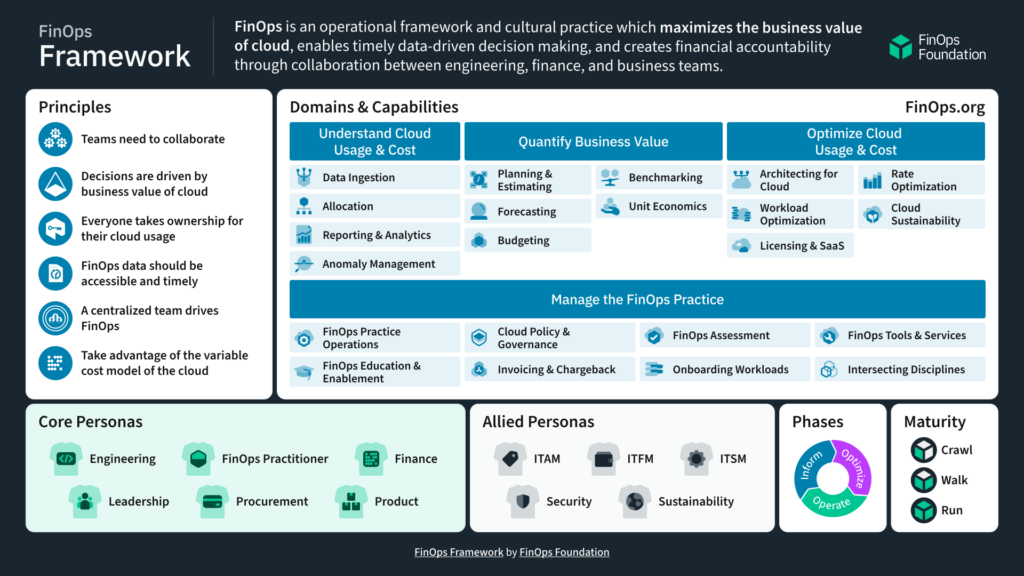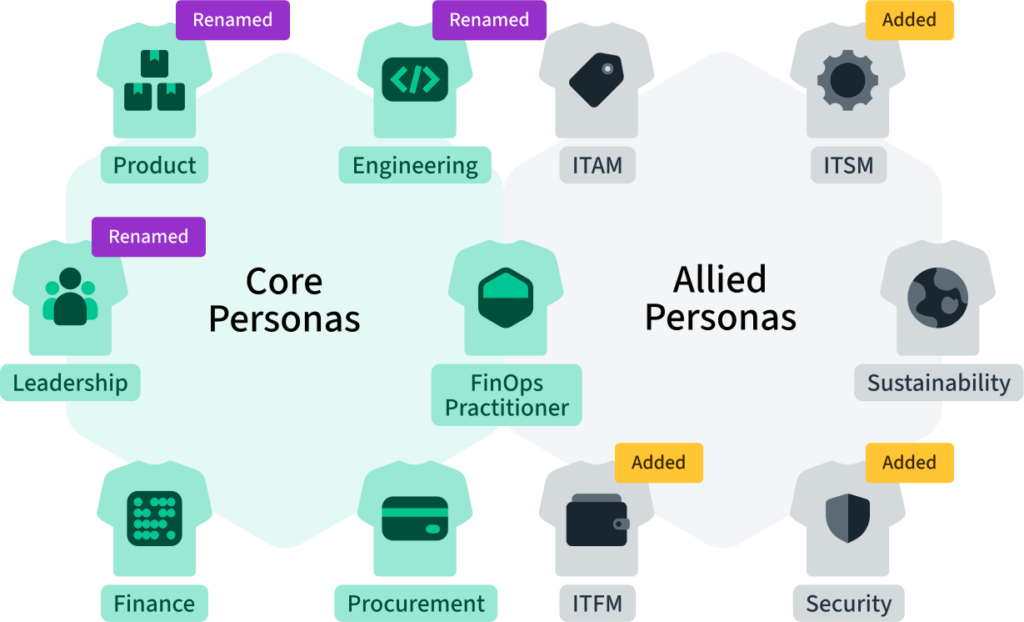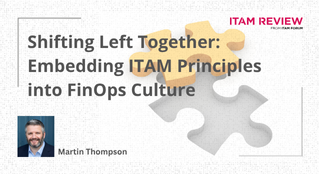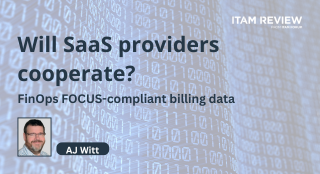FinOps Framework updated to include new Licensing & SaaS capability
The FinOps Foundation has added a new Licensing & SaaS capability to the FinOps Framework. Announced during a series of updates to the FinOps Framework for 2024, the FinOps Foundation has taken another step forward in recognising the critical importance of ITAM/SAM in the management and optimisation of cloud costs.
Quoting directly from the announcement:
The FinOps Framework has been updated to reflect the present-day practice of FinOps and to better align activities with best practices that maximize the business value of cloud. The 2024 revisions include updates to the definition of FinOps, changes to simplify the Framework organization, improvements to the Domain and Capability names, and an augmented set of Personas and Capabilities that are central to modern FinOps practices.
The changes are reflected in the following 2024 Revision of the FinOps Framework:

New Licensing & SaaS Capability added to the FinOps Framework 2024
Among the many announced changes, the most notable for ITAM is the introduction of a new Licensing & SaaS capability under the domain of Optimize Cloud Usage & Cost.
FinOps Capabilities represent the areas of activity required to meet the challenges of the FinOps practice itself. They can be thought of as building blocks that enable, educate, and bridge actionable tasks across FinOps Personas, and align technology decisions with business objectives. Seven Capabilities were added in this 2024 revision of the FinOps Framework while three were merged with existing Capabilities, bringing the Framework to a total of 22 FinOps Capabilities. The FinOps Capabilities each sit within one of the four Domains, as explained next.
Changes to Framework Domains
Framework Domains represent the four fundamental business outcomes that organizations should achieve from practicing FinOps, namely:
- Understand Cloud Usage & Cost
- Quantify Business Value
- Optimize Cloud Usage & Cost
- Manage the FinOps Practice
The updated Domains provide a succinct headline – Understand, Quantify, Optimize, and Manage – that drives how we communicate the value strategy concepts that encompass FinOps, shifting focus from methods of the practice to outcomes for the business.
ITAM Review analysis of the updates to the FinOps Framework 2024
“Further recognition of the benefits of the two disciplines working together”: Rich Gibbons

It’s good to see the FinOps Foundation is recognising the importance of ITAM to true and accurate cost optimisation in modern hybrid and cloud environments… only 5 years after we first presented on the benefits of the two disciplines working together! This addition is primarily down to the tireless efforts of various ITAM industry ambassadors who have been working with the FinOps Foundation to highlight the importance of this relationship.
The FinOps Foundation calling out capabilities such as:
- Vendor Management
- Negotiating contract terms
- Managing BYOL and compliance
- Understanding the implications of subscription licenses
and more all serve to demonstrate the strengths asset management can bring to a FinOps practice throughout the crawl, walk, run process.
As advice to FinOps practitioners, this from the FinOps definition page, is particularly important:
“Unlike public cloud, most license and SaaS purchase agreements cannot be changed as quickly, and some may take years to adjust or get out of. Careful planning must be done, well in advance, with procurement and ITAM personas to make these changes happen.”
“These changes shed light on the inevitable convergence between FinOps and ITAM”: Ryan Stefani

Really exciting to see the alignment become a real focus to the FinOps Foundation. It’s been an obvious alignment to many within the asset management industry for sometime, as FinOps and ITAM are essentially working to achieve the same goals, with just some key nuanced differences.
That being said, I also think this is a call to action for asset managers to assert themselves in their organization’s FinOps practice. In my experience, many asset managers aren’t focused on the management of cloud costs with the exception of SaaS, which is a shame. This is concerning, given that organizations such as Gartner are predicting a convergence of the two disciplines.
These changes start to shed light on that inevitable convergence. Given that so much of FinOps is very similar to ITAM, and we asset managers have the skills needed to jump start a mature FinOps practice if organization lacks one. Or if our organization has a FinOps practice, this now presents an opportunity for us to shine by supporting the these newly highlighted capabilities such that Rich called out.
Lastly, I find it vitally important that asset managers not run from the challenge of managing technology in a cloud centric world. This change is going to happen. It’s really important to lean into this, and invest in up-skill themselves in the world of cloud computing and architecture.
Other updates made to the FinOps Framework 2024
As well as the addition of seven new Capabilities, including the Licensing & SaaS capability, the FinOps Foundation announced numerous other revisions to the FinOps Framework. These are summarised below:
Updated Definition of FinOps
The TAC (Technical Advisory Council) recently approved changes to the definition of FinOps to better reflect current realities for the FinOps community, such as the shift from a focus on cost to a focus on value, and the expansion of FinOps beyond IaaS to other variable cloud costs.
Changes to FinOps Stakeholders “FinOps Personas”
The FinOps Foundation uses Personas to illustrate the various stakeholders involved in delivering the collaborative FinOps function. FinOps Personas are now grouped into Core Personas and Allied Personas. Some Personas participate directly on a FinOps team, while others are internal customers of the FinOps team, or become FinOps champions for their discipline. Note that ITSM, ITFM and Security have been added to the Framework.

The Core Personas (i.e. those directly involved in the practice of FinOps) are unchanged, however some of their names have been simplified to better reflect their role (e.g. Engineering & Operations is now Engineering, Executives is changed to Leadership etc.).
More FinOps content from the ITAM Review here:
- FinOps Guide for ITAM Managers: Free download
- FinOps, ITAM and the Shift to Cloud
- Hybrid FinOps: Uniting ITAM and FinOps teams
- Are ITAM tools vendors focusing too much on the next big thing (e.g. FinOps) at the expense of core SAM functionality?
Can’t find what you’re looking for?
More from ITAM News & Analysis
-
Broadcom vs Siemens AG - A Brewing Storm
The ongoing legal battle between VMware (under Broadcom ownership) and Siemens is yet another example of why ITAM goes far beyond license compliance and SAM. What might, at first glance, appear to be a licensing dispute, ... -
Shifting Left Together: Embedding ITAM into FinOps Culture
During one of the keynotes at the FinOps X conference in San Diego, JR Storment, Executive Director of the FinOps Foundation, interviewed a senior executive from Salesforce. They discussed the idea of combining the roles of ... -
Addressing the SaaS Data Gap in FinOps FOCUS 2.1
I recently reported on the FinOps Foundation’s inclusion of SaaS and Datacenter in its expanded Cloud+ scope. At that time, I highlighted concerns about getting the myriad SaaS companies to supply FOCUS-compliant billing data. A couple ...
Podcast
ITAM training
Similar Posts
-
Broadcom vs Siemens AG - A Brewing Storm
The ongoing legal battle between VMware (under Broadcom ownership) and Siemens is yet another example of why ITAM goes far beyond license compliance and SAM. What might, at first glance, appear to be a licensing dispute, ... -
Shifting Left Together: Embedding ITAM into FinOps Culture
During one of the keynotes at the FinOps X conference in San Diego, JR Storment, Executive Director of the FinOps Foundation, interviewed a senior executive from Salesforce. They discussed the idea of combining the roles of ... -
Addressing the SaaS Data Gap in FinOps FOCUS 2.1
I recently reported on the FinOps Foundation’s inclusion of SaaS and Datacenter in its expanded Cloud+ scope. At that time, I highlighted concerns about getting the myriad SaaS companies to supply FOCUS-compliant billing data. A couple ... -
The Future of ITAM
As an ITAM Industry Analyst, I’m often asked what ITAM’s future looks like. This can be a tough question to answer because when it comes to the future, there are endless possibilities. Often, it seems, some ...




